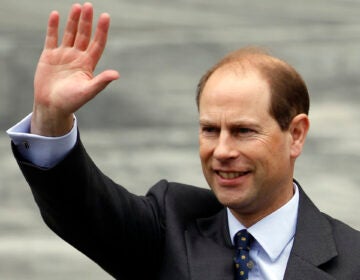Catholic school closing may lead one East Falls family to leave their city, and their church
When sixth grader Emma Spaeth opened her backpack and removed the envelope sent home from her school, she couldn’t have known the repercussions this act would have for her family.
Neither did her Mom. Assuming the papers were routine notices from St. Bridget School in East Falls, Julie Spaeth waited until the next morning to check them out.
When she did read the notices, her confusion mounted, then she collapsed into a chair and began sobbing.
A week later, the “For Sale” sign went up on the Spaeth home.
What did the letters say? That tuition for the three Spaeth children at St. Blaise, the new regional Catholic school set up after St. Bridget’s became part of this year’s wave of Catholic school closings, would total $15,600. At St. Bridget’s, that figure had been around $6,000.
That hurt, but a second notice hurt Julie Spaeth even more: It informed the Spaeths that the tuition would be that high because they had been determined to be “non-participating parishioners” – and St. Bridget had to reserve its precious funds for tuition aid to fully participating parishioners.
The Spaeths’ confusion and pain has been replayed around the Archdiocese of Philadelphia, as Catholic parishes struggle to cope with a tough fiscal situation while following firm rules for parish life.
“These decisions were made only after careful consideration,” the Rev. Joseph Devlin, pastor of St. Bridget, told NewsWorks, “with the goal of trying to be as supportive as possible to our families who chose to enroll their children in a catholic school.”
A choice that made sense
Julie and her husband, Chris, moved to East Falls in 1996. They selected the neighborhood for its charm, its access to Center City, and abundant recreation. St. Bridget Catholic Church and school being so nearby clinched the deal.
Chris was raised Episcopalian, but Julie was a proud product of Catholic schools. The couple married as Catholics and decided to raise their children in the faith. They liked St. Bridget’s reasonable tuition and its interweaving of school and parish life.
Julie Spaeth said she was “really on board” with the archdiocese’s decision early this year to close St. Bridget and join its students with those from Holy Child School in Manayunk to form the new St. Blaise Regional School.”
“We understood the viability of the decision,” she said. She added that other parents were more upset because St. Bridget had been part of their lives for generations.
But once those notices came home in Emma’s backpack, the situation got emotional for Julie Spaeth. The tuition hike – that was bad news. But what really stung was the designation that her family were not considered full members of the parish.
She felt her church was telling her she no longer belonged.
A painful winnowing
Spaeth recalls that Father Devlin mailed a survey to St. Bridget parents in February. It asked, she said, families to select the category most representative of their commitment to St. Bridget:
Parishioners – those who attend Mass every week and make regular donations.
Non-parishioners – those who don’t attend Mass.
Occasional – Those who come to Mass sometimes.
In the letter, Father Devlin made clear that results of the survey would affect the parish’s tuition aid decisions for the coming school year.
Wanting to be truthful, Spaeth chose “occasional,” but wrote in by hand that she attends “much more than regularly.”
“I don’t go every week,” she said, but indicated that she volunteers regularly, and donates money to the church at the level asked – $20 per week – or above.
St. Blaise, the new regional school, sent parents of students at St. Bridget’s and Holy Family a notice breaking down how tuition would be levied next school year.
According to the March 15 notice, families designated as “parishioners” would be charged $4,200 per child. “Non parishioners” would pay $5,200 per child.
The notice also indicated that, “registered, fully-participating parishioners [of the merged schools] will be receiving tuition scholarships with them with their support of their Parish and Catholic Education.”
Then a second letter from St. Bridget’s told its parents that the new set-up with St. Blaise meant individual parishes would be providing only “limited financial support.” It went on to say that non-parishioners would receive no help with tuition, but those designated as “partially participating” would get a little help in the first year.
Despite her written survey response, Julie Spaeth’s household was marked down as “non-participating.”
Mass matters, a lot
In a full written response to a NewsWorks request for comment, Father Devlin said he could not comment directly on the Spaeths’ situation, citing professional and pastoral boundaries. He did say, however, that the category of “non-participating parishioner” was in no way intended to drum anyone out of the parish or the Catholic Church. All it referred to, he said, was eligibility for tuition aid from St. Bridget’s.
He said St. Bridget’s formerly had amply subsidized tuition for parish families, disguising from them the true cost of a Catholic education. Facing $380,000 “in arrears,” Father Devlin said the parish is no longer able to offer “such a generous subsidy.”
These fiscal woes were a big reason why an archdiocesan commission ordered St. Bridget’s school to merge with Holy Family
Father Devlin said families were sorted into tuition categories based on the results of the survey, parish contribution records and his “personal experience.”
He stressed that attending Mass every week is a “solemn obligation” for practicing Catholics.
“If parents are unwilling to bring their children to Mass each week,” he said, “then they are not fulfilling their obligation, nor are they fully raising their children in the Catholic faith.”
He said that he and his parish finance council should “only spend the hard earned money of the faithful, weekly participating, financially supporting parishioners of St. Bridget, on parishioners who are similarly committed to the faith.”
He said parents not put in the “parishioner” category were told those decisions will be reviewed yearly, and regular Mass attendance could put their children back in line for tuition aid.
A small array of options
The letter from St. Blaise initially gave parents only two weeks to decide whether to register their children for the next school year.
Unable to cover the higher tuition – and experiencing, in Julie Spaeth’s words, “anger, embarrassment, and panic” – the couple weighed the options.
Private schools were out. Even if an affordable one could be found, applications deadlines were long past.
Other Catholic schools could enroll a child from St. Blaise’s catchment only with approval of the home parish’s pastor.
And the Spaeths were leery of the public school just around the corner, Mifflin Elementary, citing low test scores.
So, the “For Sale” sign went up on their home.
Fitting into big trends
The history of St. Bridget School and the experience of its families mirror larger trends in Catholic education.
Carol Ann MacGregor, a doctoral candidate in sociology at Princeton University who studies Catholic school closings, said Philadelphia seems to be “suffering particularly acutely” from that national plague.
Looking back to history, she said Catholic education in America expanded rapidly in the late 19th century, after a Vatican decree in the 1870s that every American parish should have a school. According to Ellen Sheehan, President of the East Falls Historical Society, St. Bridget School was built in that era, around 1887. A second wave of school building hit during the post-World War II baby boom. St. Bridget’s opened a new building in 1949; enrollment peaked shortly thereafter at 1,000 pupils. Catholic school enrollment peaked nationally in 1965 at 5.5 million, representing about one out of every eight K-12 students, MacGregor said.
And just at the peak, the Second Vatican Council and global events ushered in major changes, and new thoughts about the role of women in the church. The number of nuns, the core of most Catholic school faculties, began a steep long-term decline. So costs and tuitions rose in concert.
That made people question the value of parochial education: “People began asking, ‘What’s Catholic about it?’ and, ‘What do I get for it?'”
The mass movement of the middle class to the suburbs heightened these problems for schools in urban neighborhoods such as St. Bridget’s.
Catholic school enrollment nationally is now 2.5 million, MacGregor said.
And in its last year, St. Bridget’s now enrolls 200 students.
Many parents scrambling
The Spaeths are not alone in struggling with the ripple effects of the St. Blaise merger.
Sean Stevens, a St. Bridget parent who led an effort to prevent the closing of school, said he knows of many many families thinking of moving to the suburbs.
Others, he said, have applied and have been accepted to charter schools, one of the city’s independently run but publically funded schools. In his view, administrators at Mifflin, the public school in East Falls, have been cooperative and welcoming to inquiring parents.
He said he hasn’t met many parents who are excited about St. Blaise as an option.
A difficult decision
For the Spaeths, the final decision was one so many Philadelphia parents have made over the decades: move to the ‘burbs.
“We decided the best thing we could do was to move into a community with a strong public school system,” she said. “We’re praying that we can sell and buy in time for the new school year.” But they’re prepared to rent somewhere in the suburbs, while renting out their East Falls house.
Not reached lightly, it’s a sweeping change for a family that was prepared to spend their life in the city.
They’re also reconsidering their relationship with Catholicism.
“We’re having a discussion right now,” Spaeth said, “and we’re beginning to think our beliefs are more in line with the Episcopalian church.”
Father Devlin said he is saddened when anyone decides to leave the Church: “I certainly don’t want to see that happen.”
However, he reaffirmed his expectation of Mass attendance.
“Perhaps another denomination does not require its members to make such a weekly commitment,” he said, “but the Catholic Church does.”
WHYY is your source for fact-based, in-depth journalism and information. As a nonprofit organization, we rely on financial support from readers like you. Please give today.




